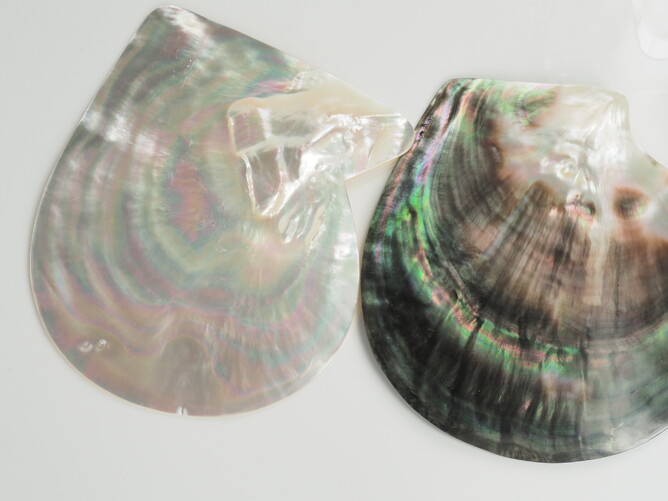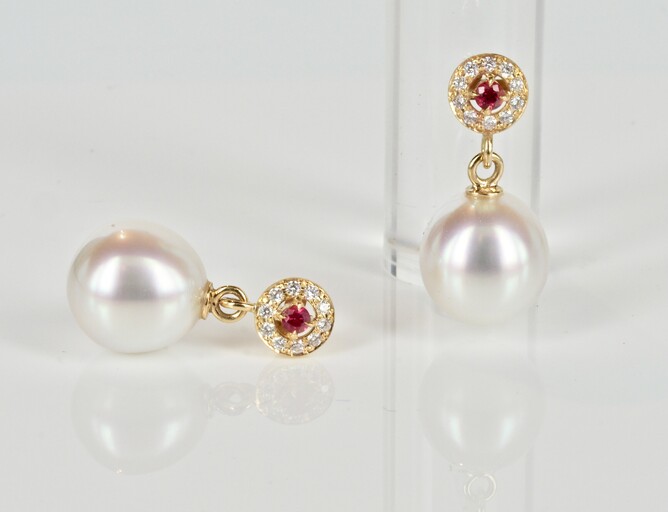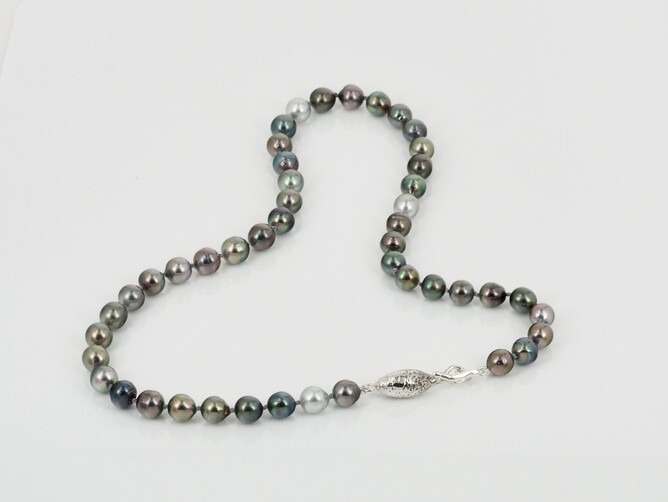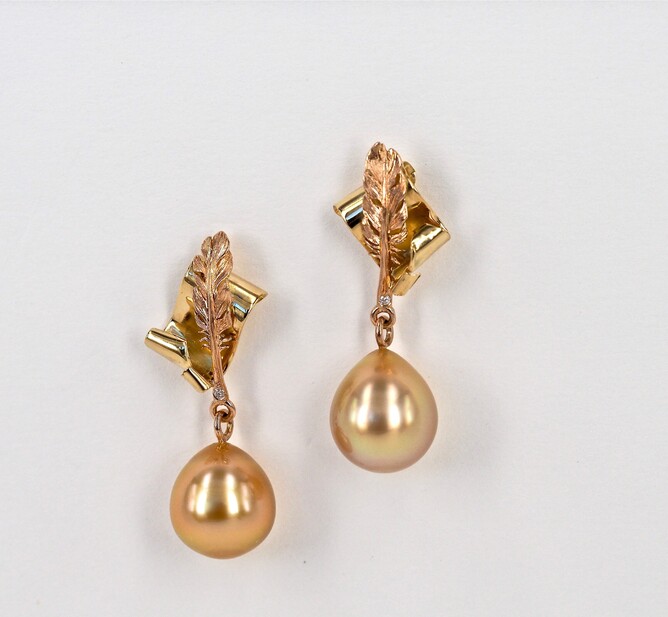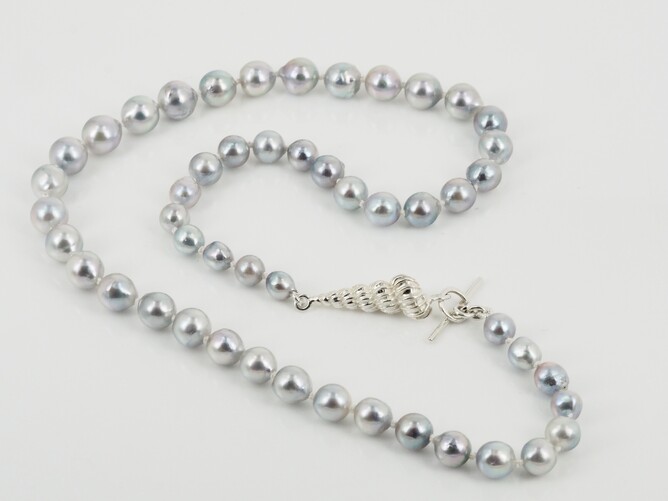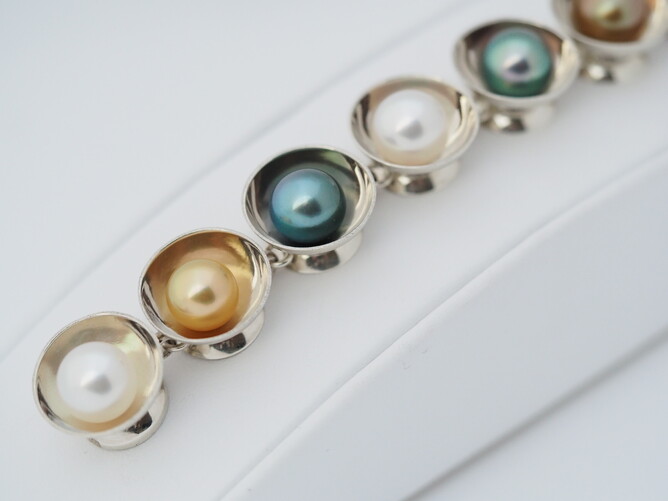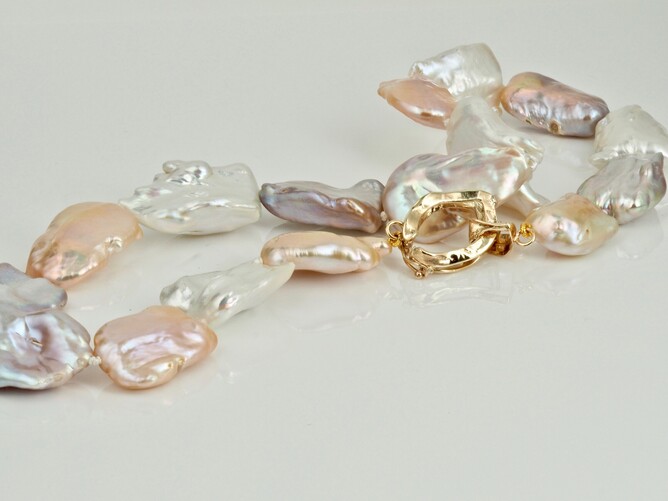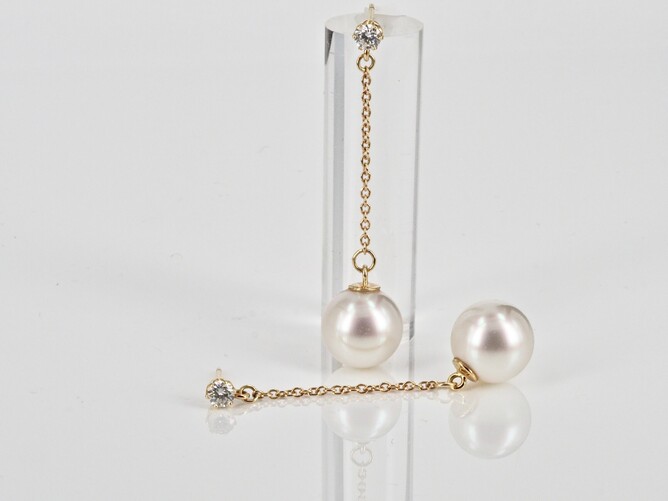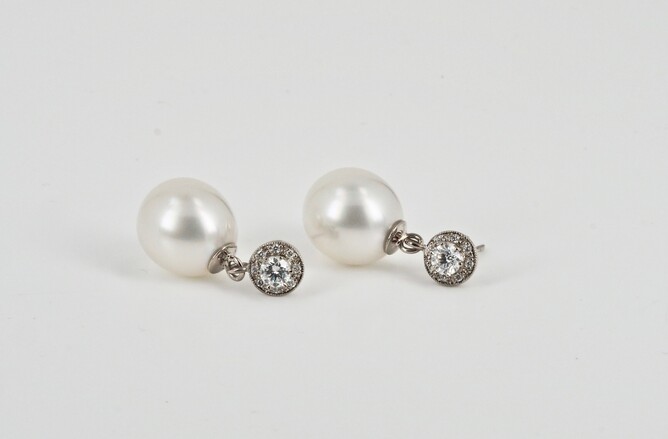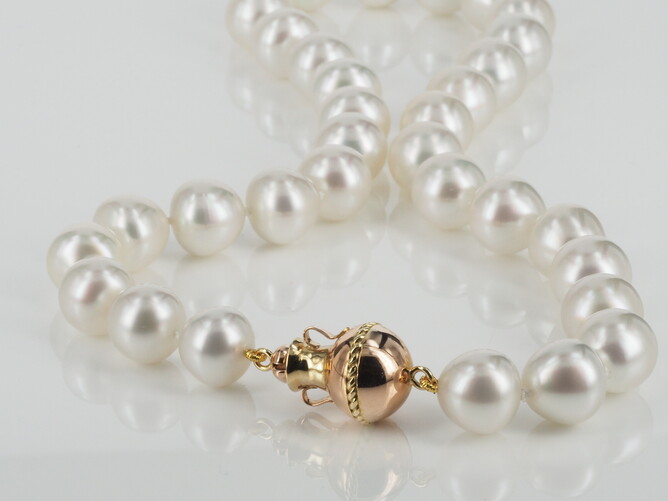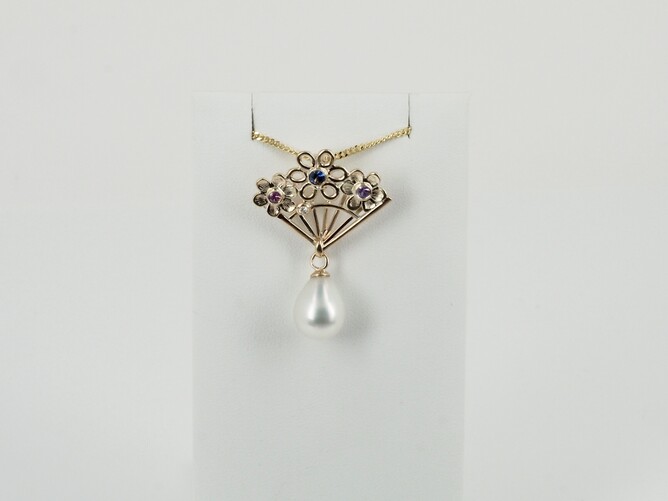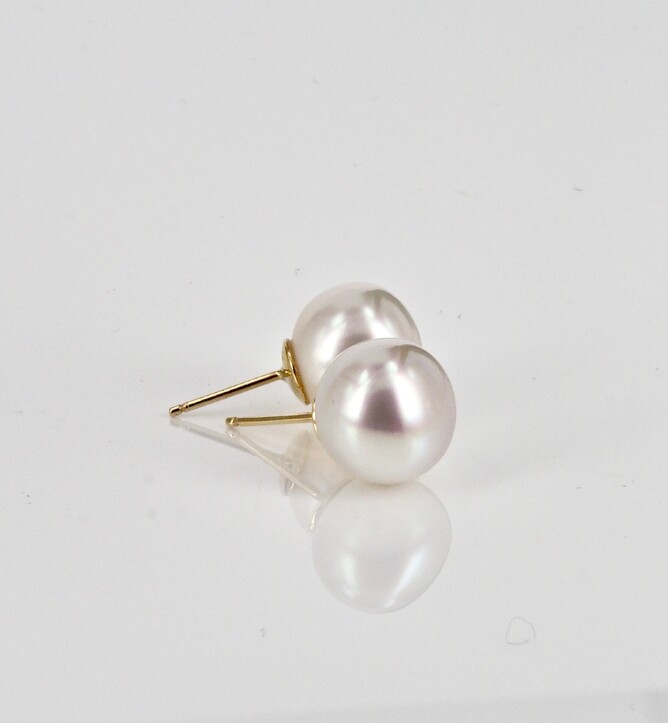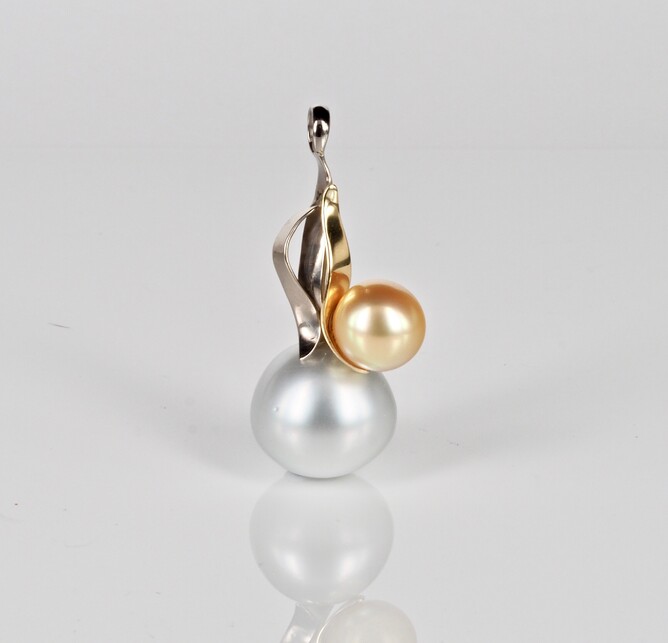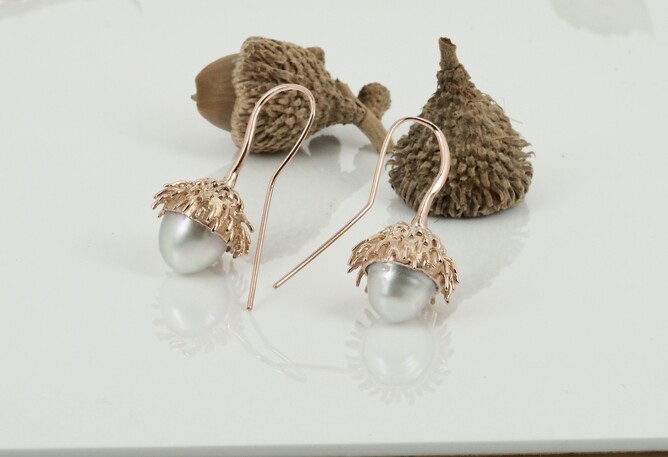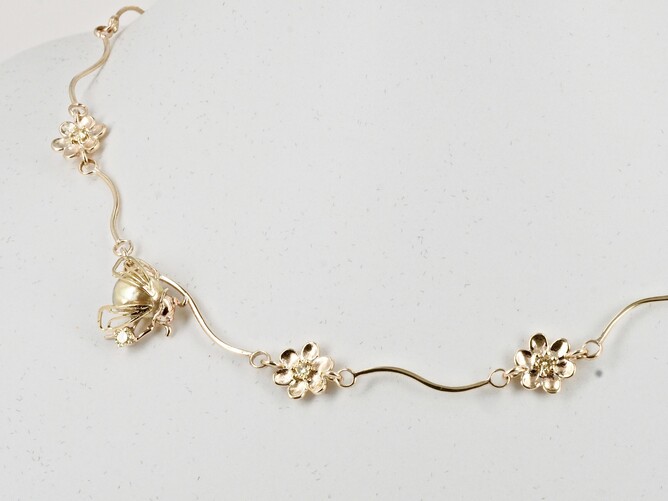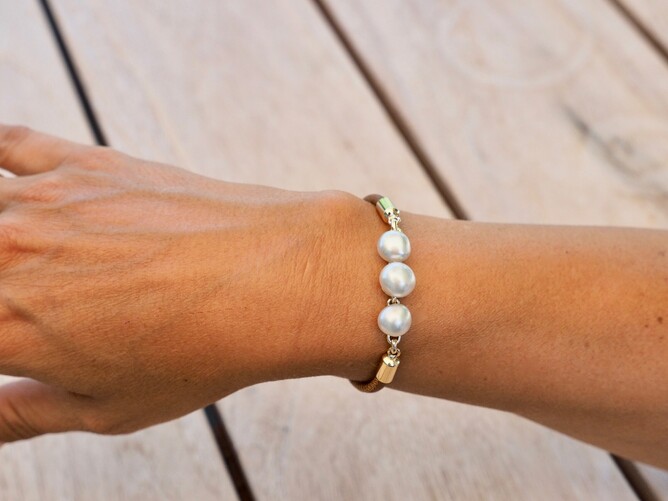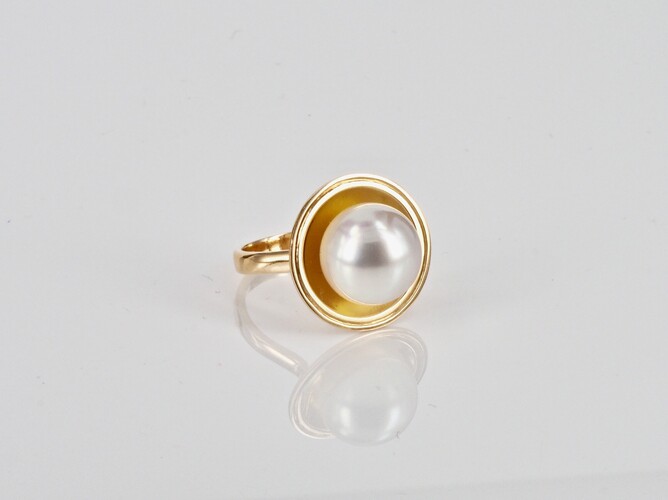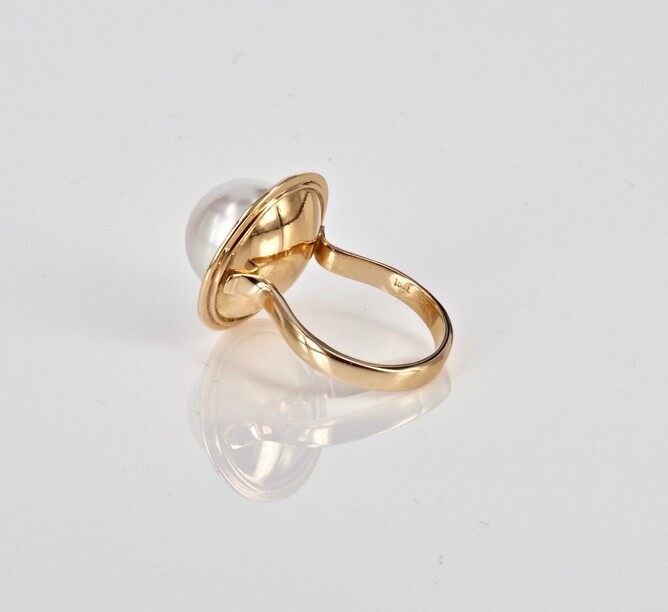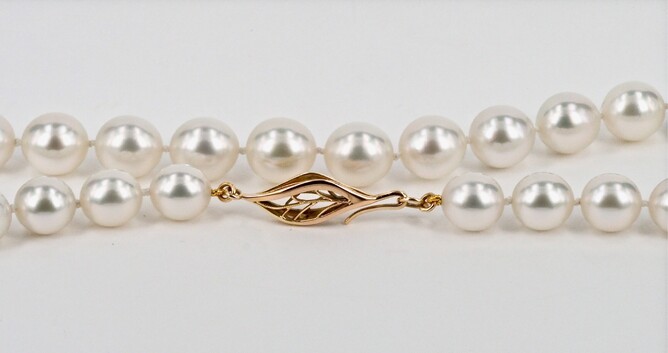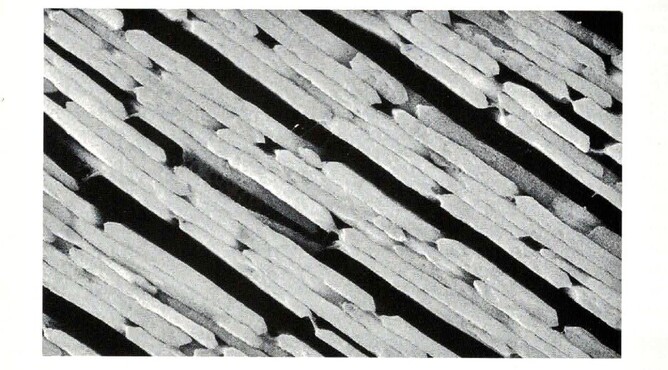What an excellent question and of course an excellent choice of a gem!
You might be approaching this question with some prerequisites in mind or you may just want some general information.
I will focus on South Sea pearls for this blog, with a small section on freshwater pearls.
5 Characteristics of a Pearl
Pearls are graded by 5 characteristics.
Colour
Shape
Size
Complexion
Lustre
Colour
South Sea pearls standardly come in three colours: white, gold and black.
Although the base colour of a pearl may be described as white, gold or black, they can come with an array of overtones.
The best way to explain what I mean is for you to see the rainbow of colours in the oyster shells pictured below.
The white shell is an Australian Pinctada maxima from Australia and the other shell is Pinctada margaritifera from Tahiti.
White Pearls
The most common overtone for a white pearl is silver, pink and slightly greenish.
A pearl's overtone has a bearing on its overall price. The most favoured overtone for a white pearl is pink.
The earrings pictured below are a pair of oval, gem grade Australian South Sea pearls. They have a beautiful rosy overtone which is why I chose warm pink sapphires/rubies to go with them.
Black Pearls
To be honest, black pearls are rarely black but it is hard to reference them in any other way. I could say Tahitian pearls, but that term can’t be used for pearls coming from Rarotonga, Fiji or Tonga, even though the oyster is the same, Pinctada margaritifera, the difference being that the sub species vary.
Black pearls can come in a rainbow of colours as you saw from the oyster shell above.
There are quite a few overtones for black pearls: green, blue, mauve, pink, gold and brown. Green is often described as pistachio or peacock green. Peacock green overtones often command higher prices.
Gold Pearls
I did not know gold pearls existed until a trip to Broome, Western Australia, about 16 years ago.
Upon seeing them I was hooked and I had to buy some.
The finest gold pearls are considered to come from the Philippines and they command high prices. The species of oyster in the Philippines is Pinctada maxima, the same species of oyster that produces white pearls in Australia and Indonesia. Gold pearls also occur in Australia and Indonesia, with their colours ranging from champagne, light gold to darker gold.
The stunning gold pearls pictured in the earrings below are reported to be gold pearls from Australia; they have a beautiful pink overtone. Gold pearls can also come with a green overtone.
Blue Pearls
Not many pearls are natural blue.
Maybe (pronounced 'mar - bay') or blister pearls from an abalone, paua - Haliotis Iris are sometimes referred to as being blue. A maybe/blister pearl is formed on the inside of the oyster's shell, it is not a free-formed pearl. Abalones rarely produce a free-formed pearl but if they do its often shaped like a shark's tooth.
Akoya pearls, Pinctada fucata, found in the seas around Japan, Vietnam and South China, sometimes produce what is considered a blue/grey pearl, Vietnam usually being the main source for these pearls.
Pictured below is a strand of blue/grey Akoya pearls with a sterling silver shell clasp.
Pictured below is my winning competition bracelet with a steel blue pearl, Pinctada margaritifera typica, from Fiji. The design idea behind this bracelet is to use light to create an optical illusion of pearls floating in water. All pearls are natural colours and from the South Seas.
Freshwater Pearl Colours
Freshwater pearls come in a few different colours: soft pink (not bright or it will be dyed) peach, mauve and white. White pearls are rare so most are bleached. Black freshwater pearls are dyed or irradiated, they are not naturally black.
Pictured below is a fun strand of natural coloured freshwater pearls with a clasp I have made to match. As you can see, this particular shape is not standard compared to sea pearls.
Shape
The shape of a pearl also has a large bearing on its price.
South Sea pearl shapes are described as follows;
Round
Off round
Oval
Drop
Button
Circlé
Baroque
Keshi
Round Pearls
A pearl is described as round when the diameter, taken from different points around the pearl is consistent within a 2% variation.
Round pearls command the highest prices.
The elegant earrings pictured below are diamonds, round rosy-toned Australian South Sea pearls set in 18ct gold.
Off Round and Oval Pearls
Off round and oval pearls are a good option if you would like the look of round pearls, without the expense of round pearls.
Pictured below are a pair of cooler-toned oval Australian South Sea pearls with white gold and diamonds.
Drop and Triangle Pearls
Perfect drop and triangle-shaped pearls are arguably the rarest of the South Sea pearl shapes and they can be hard to come by.
Button Pearls
Button pearls are flattish on one side and rounded on the other. Once more, if you are looking for a pair of pearls that are a good size without the expense of round pearls, then button pearls are an excellent alternative.
Baroque Pearls
Measurements taken from a baroque pearl are not consistent and so they do not fit into the first 4 categories above.
Baroque pearls are quite often silver in colour.
The picture below is a pendant I designed and made for a client, a silver-coloured baroque pearl with a gold Australian South Sea pearl set in white gold.
Pearl Pendant
Circlé
Circlé pearls come in a variety of overall shapes, but they are always defined by full or partial rings around them. They are the best pearls to have if you would like a large pearl without affording the price of a round one. Also circlé pearls can lend themselves to interesting designs. I have been using circlé pearls in my recent bee and acorn jewellery series.
Acorn Earrings
Circlé pearls have been used in these earrings to represent cork oak acorns.
Keshi Pearls
Keshi is a Japanese word meaning 'poppy seed'. A keshi pearl is the by-product of the pearl culturing process.
An oyster is nucleated with a round bead and a tiny piece of live mantle tissue. If the oyster rejects the bead the live piece of mantle tissue will still make a pearl. A keshi pearl is similar to a natural pearl, but it can't be called a natural pearl as it started with man's intervention.
Pictured below is a necklace with a keshi pearl that I have turned into a bee. The pearl's colour is a mix of gold and white.
Keshi Pearl Bracelet
The picture below is a bracelet a client designed and asked me to make. There are three Indonesian keshi pearls set in gold with tan-coloured Italian leather.
Pearl and leather bracelet.
Size
What can I say, the bigger the better! South Sea pearls range from 8mm to 20mm, the latter being quite rare.
A large pearl will usually command a higher price than a smaller pearl, however, its shape, complexion, lustre and market demand, must also be taken into consideration.
A large circlé pearl will not command a high price, unless there are a few other factors that make it very unique.
Below is a ring with a 12mm diameter, slightly button-shaped pearl in it. I have called the ring Cleopatra's bath.
Pearl Complexion
Complexion is also referred to as a pearl's skin. The fewer marks, spots, dots, bumps, scratches and minimal movement there are on a pearl's skin, the greater the value. Complexion is an important factor for me when I am buying South Sea pearls. I like to sell pearls that have minimal pits and skin movement.
Complexion is something I believe you should be looking at if you are considering buying a strand of white South Sea pearls. Take time to look closely at the strand of pearls you are considering.
Pictured below is an off round - oval strand of Australian South Sea pearls with a handmade clasp. Most pearl strands in NZ are sold with generic clasps. I believe in making a point of difference with the pearl strands I sell by their quality and handmade clasps.
Pearl Strand
Pearl Lustre
Lustre is often considered the most important factor of all.
Lustre is the way light interacts with the nacre of a pearl. Nacre viewed under a microscope looks like carefully laid bricks. Badly laid nacre looks like a jumble of bricks! An oyster lays down the best nacre in the cooler months of the year. Akoya pearls are grown in cooler waters, resulting in the nacre of some pearls appearing metallic.
Pearl harvesting takes place in the coolest months of the year when, hopefully, the oyster is laying down its last layer of nacre slowly.
Pictured below is a micrograph of individual layers of nacreous crystals in a cultured Akoya pearl, separated by layers of conchiolin. (click here to learn about conchiolin.) Each nacreous layer is a fraction of a micron thick.
How do I know I am buying a good Pearl?
Take into consideration all of the factors I have shared with you and take into consideration the reputation of the place you are buying from.
What type of pearl are you buying, is it from the sea or freshwater?
Beware of amazing bargains - some information on the pearl may have been withheld.
If they are sea pearls, what country are they from? This also has a bearing on the price.
When I am selling pearls to a client, I like them to know exactly what they are buying.
Reference
Lynaire Kibblewhite - GIA (Gemological Institute of America) Certificate in Pearls
